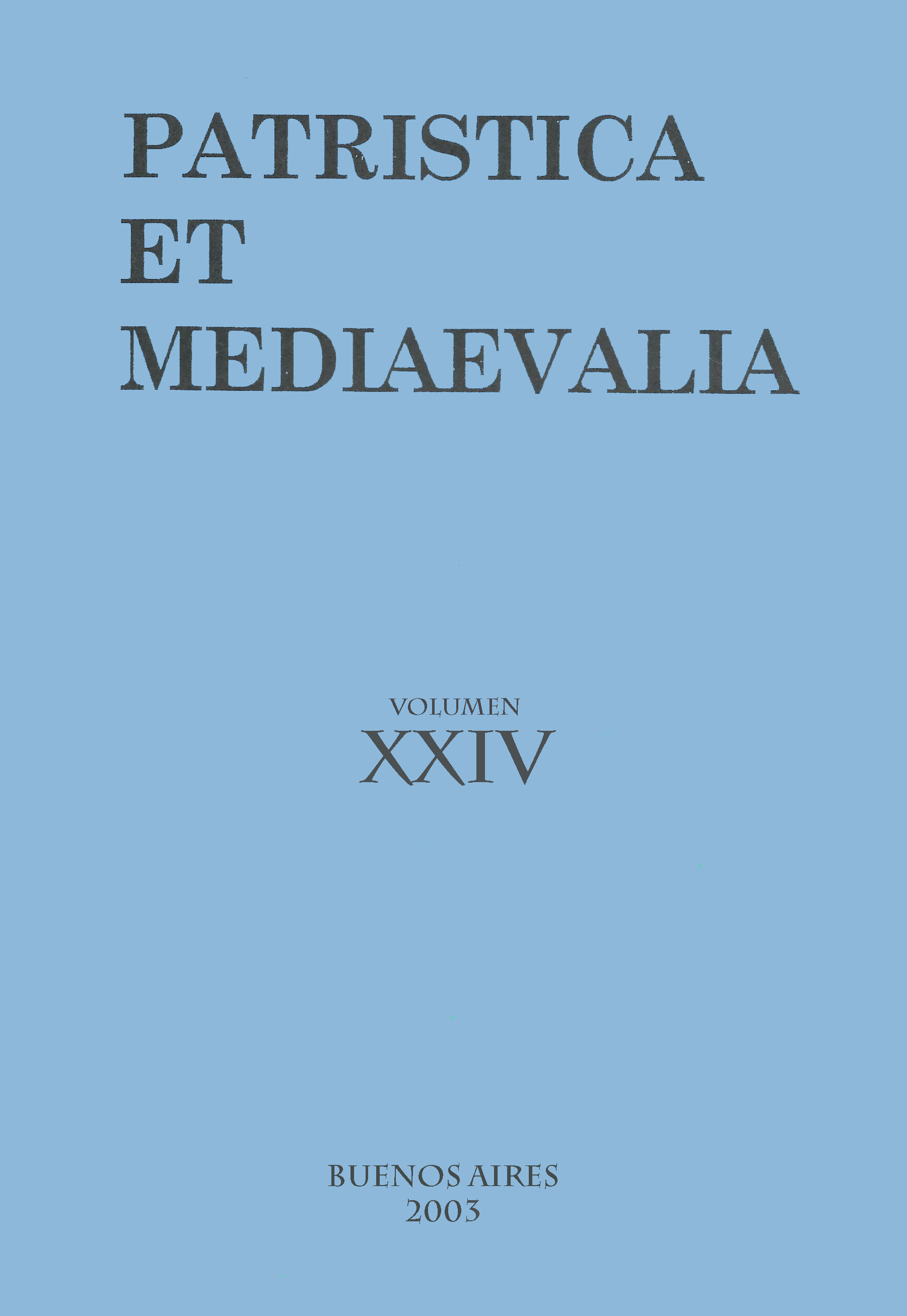La naturaleza y sus fines en la discusión sobre el vacío desde el siglo XIII hasta el siglo XVII
Resumen
Este artículo parte del estudio de Pierre Duhem para postular que un número importante de autores medievales, renancentistas y de la temprana modernidad postularon el mismo principio teleológico para negar la existencia del vacío. Este principio reza que la naturaleza particular y específica debe someterse a la naturaleza común y universal en pos de conservar el bien de la naturaleza. Como resultado, aunque se observa una continuidad conceptual que asume una estructura teleológica, con todo pueden apreciarse variaciones si se atiende al contexto y tiempo específicos de los distintos autores.Descargas
Citas
Barker, P. & Arriew, R. (eds.) (1991). Revolution and Continuity, Essays in the History and Philosophy of Early Modern Science. Washington: The Catholic University of America Press.
Baur, L. (1912). Die philosophischen Werke des Robert Grosseteste, Bischofs von Lincoln. Beiträge zur Geschichte der Philosophie des Mittelalters, vol. 9. Münster: Aschendorff.
Burtt, E. (1954). The Metaphysical Foundations of Modern Science, revised edition. Garden City, New York: Doubleday (1ra ed rev 1952).
Crombie, A. C. (1953). Robert Grosseteste and the Origins of Experimental Science 1100-1700. Oxford: Oxford University Press.
De Carvalho, M. S. (1999). Medieval Influences in the Coimbra Commentaries (An Inquiry into the Foundations of Jesuit Education). Patristica et Mediaevalia, 20, 19-37.
Des Chene, D. (1996). Physiologia, Natural Philosophy in Late Aristotelian and Cartesian Thought. Ithaca/London: Cornell University Press.
De Waard, C. (1936). L’expérience barométrique, Ses antécédents et ses explications. Thouars: Ramon.
Duhem, P. (1913-1959). Le Système du Monde, 10 vols. Paris: Hermann.
Eastwood, B. (1984). On the Continuity of Western Science from the Middle Ages: A. C. Crombie’s Augustine to Galileo. Isis, 83, 84-99.
Gilson, É. (1930). Études sur le rôle de la pensée médiévale dans la formation du système cartésien. Paris: Vrin.
Gotthelf, A. & Lennox, J. (1987). Philosophical Issues in Aristotle’s Biology. Cambridge: Cambridge University Press.
Grant, E. (1973). Medieval Explanations and Interpretations of the dictum Natura abhors a vacuum. Tradition, 29, 327-338.
Grant, E. (1981). Much Ado about Nothing, Theories of Space and Vacuum from the Middle Ages to the Scientific Revolution. Cambridge: Cambridge University Press.
Grant, E. (1998). The Foundations of Modern Science in the Middle Ages, their Religious, Institutional, and Intellectual Contexts. Cambridge: Cambridge University Press.
Jammer, M. (1970). Conceptos de espacio, prólogo de A. Einstein. Grijalbo: México (1ra edición: 1954, Cambridge (Mass.): Harvard University Press).
Leijenhorst, C. (1996). Hobbes and the Aristotelians. Utrecht: The Leiden-Utrecht Research Institute.
Lindberg, D. & Westman, R. (eds.). Reappraisals of the Scientific Revolution. Cambridge: Cambridge University Press.
Lovejoy, A. (1964). The Great Chain of Being. Cambridge (Mass.)/London: Harvard University Press (1ra edición: 1936).
Maier, A. (1966). Die Vorläufer Galileis im 14. Jahrhundert, Studien zur Naturphilosophie der Spätscholastik. Roma: Edizioni de Soria e Letteratura.
O’Brien, D. (1981-1984). Theories of Weight in the Ancient World, 2 vols. Paris: Les belles Lettres/ Leiden: Brill.
Rossi, P. (1990). Las arañas y las hormonas, Una apología de la historia de la ciencia, trad. J. Bignozzi. Barcelona: Crítica (1ra edición: Bolonia, 1986).
Schmitt, Ch. (1967). Experimental for and against the Void: the sixteenth-century Arguments. Isis, 58(3), 352-366.
Schmitt, Ch. (1986). Aristotle and the Renaissance. Cambridge (Mass.): Harvard University Press.
Shapin, S. & Schaffer, S. (1984). Leviathan and the Air Pump. Chicago/London: The University of Chicago Press.
Wallace, W. (1984). Galileo and his Sources: The Heritage of the Collegio Romano in Galileo’s Science. Princeton (NJ): Princeton University Press.
1. Los/as autores/as que publiquen en esta revista aceptan las siguientes condiciones:
-
Conservan los derechos de autor/a y ceden a la revista el derecho de la primera publicación, con el trabajo registrado con Licencia Atribución-CompartirIgual 4.0 Internacional, que permite a terceros utilizar lo publicado siempre que mencionen la autoría del trabajo y a la primera publicación en esta revista.
-
Pueden realizar otros acuerdos contractuales independientes y adicionales para la distribución no exclusiva de la versión del artículo publicado en esta revista (p. ej., incluirlo en un repositorio institucional o publicarlo en un libro) siempre que indiquen claramente que el trabajo se publicó por primera vez en esta revista.
-
Tienen permitido y se les recomienda publicar su trabajo en Internet (por ejemplo en páginas institucionales o personales).
2. Condiciones de auto-archivo. Se permite y se anima a los/as autores/as a difundir electrónicas la versión post-print de sus obras ya que favorece su circulación y difusión y con ello un posible aumento en su citación y alcance entre la comunidad académica. Color RoMEO: azul.













